Monster Hunter: Learning Through Play
Simon Fraser University (SFU) | IAT 210: Video Game Design Research Essay | Summer 2025 | Taught by: Dr. Michael Filimowicz
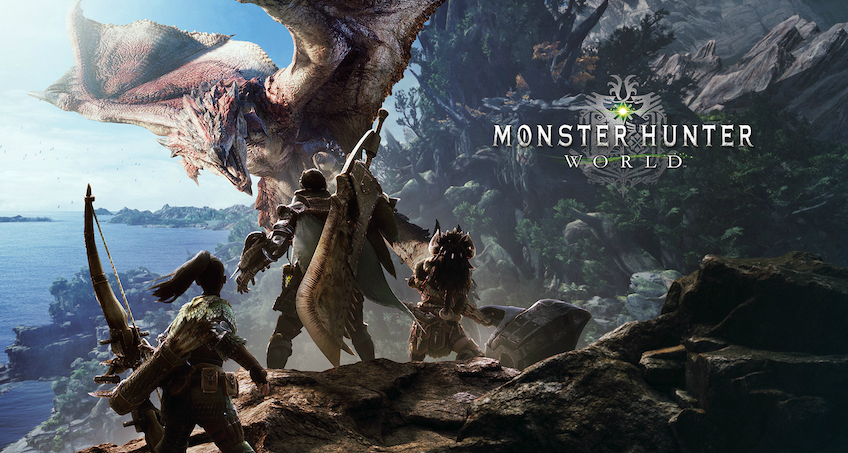
Simon Fraser University (SFU) | IAT 210: Video Game Design Research Essay | Summer 2025 | Taught by: Dr. Michael Filimowicz

Today, many role-playing games (RPGs) follow the same patterns, such as increasing stats, repeating tasks to level up, and using simple skill trees. Monster Hunter is different because it focuses on a unique design. Instead of building power by raising numbers, the game values knowledge, strategy, and player skill. Progress comes from learning how to play better, not from getting stronger equipment or doing the same things over and over again. Each hunt is more than just a fight. It is a chance to learn and improve. The game gives little instruction and does not offer easy success. Players must watch carefully, try different methods, and improve their strategies through practice. By playing actively and thinking carefully, they gain a better understanding of the game. In Monster Hunter, learning comes from doing. It is like learning a skill by practicing it again and again in real situations.
 Monster Hunter World: Cover Art
Monster Hunter World: Cover Art
Monster Hunter promotes a distinctive kind of learning based on experience and tactical skill, rather than just increasing stats or following a set path. In Monster Hunter, the main challenge isn’t dealing more damage, but learning how to navigate a complex and changing world. Monsters behave differently based on their biology and the environment, which can either help or harm the player depending on how it's used. Each weapon type demands precise timing, movement, and thoughtful decision-making. Rather than relying on detailed guides or tutorials, the game teaches through experience. Players must observe, adapt, and experiment. This approach encourages learning through context and action, where failure becomes a key part of growth. Real progress comes not from levelling up, but from gaining skill through trial, reflection, and adaptation. By tying knowledge directly to gameplay, Monster Hunter creates a unique learning space. Success depends on recognizing patterns, planning ahead, and using tools wisely. Understanding, not just stats, drives advancement. This mirrors how people build real-world skills through practice, problem-solving, and strategic thinking. As a result, Monster Hunter is more than just a difficult game. It becomes a space where players develop useful habits and ways of thinking that go beyond the screen.
In Monster Hunter, success is not about having the highest stats or the strongest weapons. Instead, it depends on how well players understand the monsters they are fighting. Every monster has its own behaviour, attack patterns, and way of interacting with the environment. These actions come from the monster’s natural traits, mood, and surroundings. Monsters are not random; they act in specific ways that players must learn to recognize. For example, Diablos can hide under the sand and surprise players with sudden attacks.
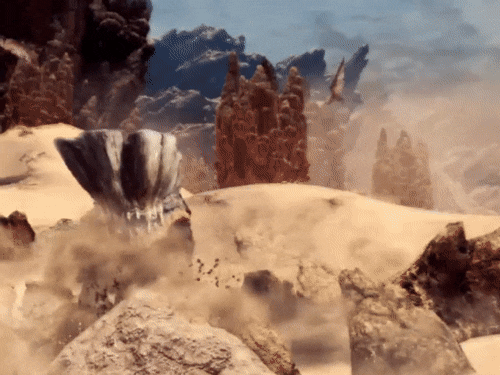 Monster Hunter World Cutscene: Diablos emerges from its burrow to attack its prey.
Monster Hunter World Cutscene: Diablos emerges from its burrow to attack its prey.
Tobi-Kadachi charges itself with electricity and moves quickly through the air, making it difficult to hunt. These behaviours are not just special effects; they are critical signals. Skilled players learn to read a monster’s body language, sounds, and movements. These clues help them predict what will happen next and react in time.
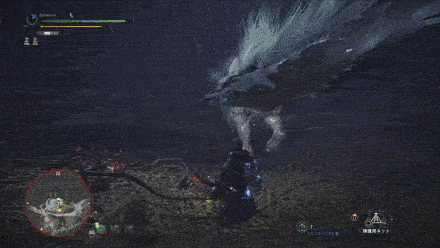 Monster Hunter World Gameplay: Tobi-Kadachi charges its fur with electricity and strikes the player with its tail.
Monster Hunter World Gameplay: Tobi-Kadachi charges its fur with electricity and strikes the player with its tail.
To improve, players must go through a cycle of watching, testing, failing, and adjusting. With practice, they gain a deeper understanding of each monster and how to respond to different attacks. Progress in the game comes from experience and learning, not just better gear. This way of learning is similar to what James Paul Gee (2003) calls the “cycle of expertise”. Players first solve problems they already understand. Then, new situations force them to adapt and grow. Each fight is not only a test of current skill but also preparation for future challenges. The game does not explain much directly. It teaches through gameplay. Players learn by doing, not by reading instructions. They study monster actions, remember patterns, and make smart choices during battle. Players learn through action and movement. This kind of learning connects the mind and body. Knowledge is shown not only in memory but also in how players move, react, and fight. Over time, players build real skill through repeated experience.
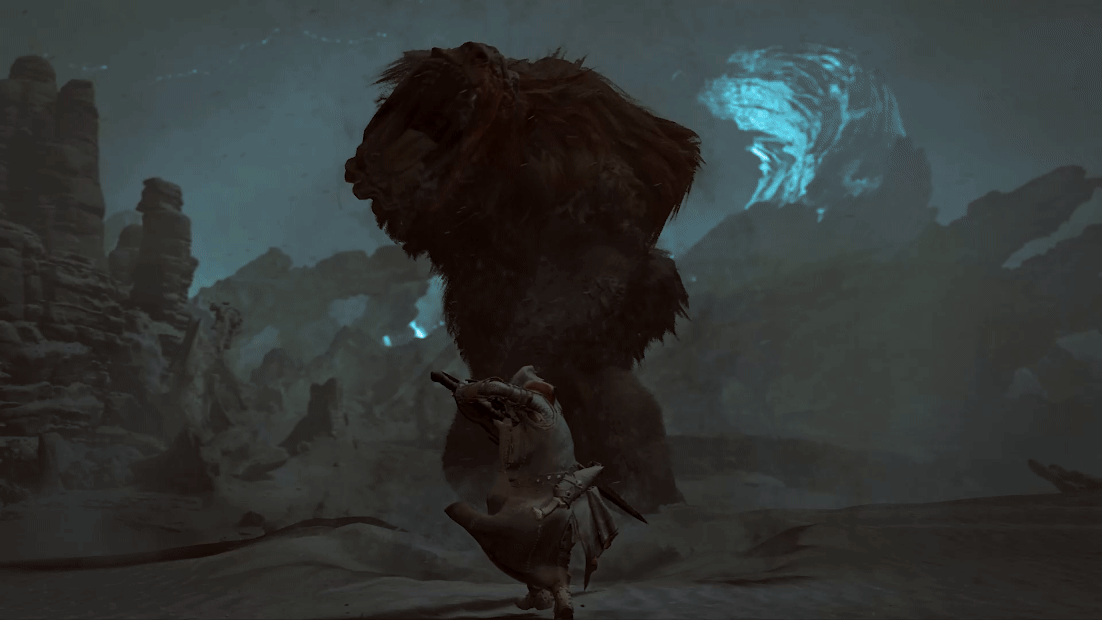 Monster Hunter Wild Gameplay: A player uses a Greatsword to block a monster’s heavy attack with precise timing.
Monster Hunter Wild Gameplay: A player uses a Greatsword to block a monster’s heavy attack with precise timing.
Furthermore, cognitive science also supports this idea. Linhares and Chada (2013) explain a model called “experience recognition”. This goes beyond simply matching patterns. It means players develop strong intuition based on many past experiences. Their thinking becomes flexible and quick because they understand the whole situation, not just small details. Skilled players don’t just remember what to do; they feel it. They can sense what will happen next based on what they have seen before. For example, just as chess experts recognize the flow of the game without checking every piece, experienced Monster Hunter players know how a fight is going without needing to think about each move. They react quickly and make smart decisions because they have learned from many past hunts. When they fail, it’s not just a loss. It’s a chance to reflect and improve.
In Monster Hunter, each battle is part of a learning journey. As the monsters become more complex, the player must also grow as the game demands it. Through this process, players develop real mastery, not through shortcuts, but through experience, reflection, and constant learning.
 Monster Hunter World: A player faints, resulting in a failed quest.
Monster Hunter World: A player faints, resulting in a failed quest.
In Monster Hunter, learning through experience is not only about the monsters. The environment also plays a big role in each hunt. The terrain is not just a background. It has a direct impact on how battles unfold. From tall cliffs and dense forests to lava fields and sandy deserts, each area offers new challenges and strategies. Players who understand and use their surroundings can gain a clear advantage in battle. For example, players can knock down rocks to damage monsters, lead one monster into another’s territory to cause a turf war, or use local wildlife like flashflies, paratoads, and vines to distract or trap enemies.
 Monster Hunter World: A player lures two monsters into a turf war.
Monster Hunter World: A player lures two monsters into a turf war.
Even small details, such as the location of healing plants or dangerous spots like poison pools, can affect how a fight goes. To succeed, players must pay attention not only to the monsters but also to the world around them. Using the environment well can change the course of a battle.
One interesting part of the game is that it does not give direct instructions about these environmental tools. The player is not told exactly what each item or creature does. Instead, they must explore, experiment, and learn from experience. This approach supports what Jacobs and his team (2021) call "procedural rhetoric". This means the game teaches ideas through its systems and rules instead of through direct explanation. In Monster Hunter, players learn that the environment can be used as a weapon, not because the game tells them, but because they see the results of their actions.
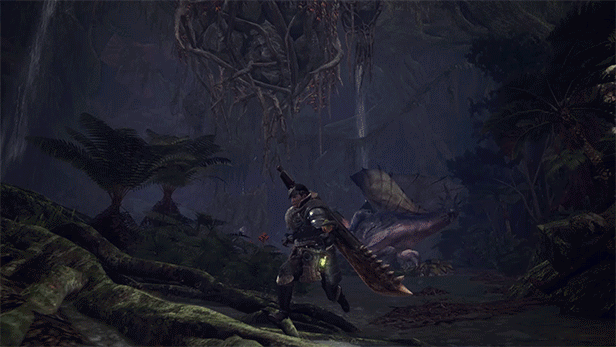 Monster Hunter World: A player uses a slinger to dodge Anjanath’s fire breath.
Monster Hunter World: A player uses a slinger to dodge Anjanath’s fire breath.
At the same time, this method makes the experience more impactful. It encourages players to think and make choices based on what they learn through action. Instead of being told how to win, players discover it on their own. This shows that real skill and understanding come from trying things out and learning through play. The way the environment works in the game also shows what Salen and Zimmerman (2004) call "meaningful play". This means that everything the player does has a clear result and makes sense within the game. When players cause a rockslide or take advantage of a monster’s behaviour in its home area, they are not just winning the fight. They are also learning how the systems of the game are connected. Each time players use the environment, they understand more about how the world and the combat systems work together. Over time, this builds what we can call systems literacy. Players begin to see the battlefield not as just a place to fight, but as part of the challenge. It is full of tools, dangers, and opportunities.
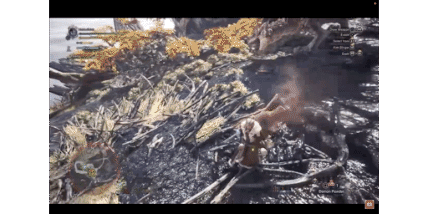 Monster Hunter World: A monster triggers a landslide by breaking a dam.
Monster Hunter World: A monster triggers a landslide by breaking a dam.

This kind of learning happens during the action. Players try, fail, think about what happened, and try again. The game rewards creative thinking and problem-solving. Every part of the world, from the smallest creature to the largest terrain feature, becomes a chance to learn something new. Each hunt turns into more than just a battle. It becomes a moment of discovery, growth, and deeper understanding.
Monster Hunter is different from many role-playing games because it does not rely on traditional levelling systems. Instead of improving through experience points or stat increases, players grow by learning, planning, and becoming more skilled. Progress in the game comes from understanding how to face each monster, not from raising numbers. Before every hunt, players must prepare carefully. This includes learning about the monster’s weaknesses, how it moves, and how it behaves in different places. Choosing the right armour, weapons, and tools is also important. Players must select gear that fits the situation and supports their strategy. Even small choices, like which Palico helper to bring or what meal to eat before a hunt, can affect the outcome. This level of preparation is not just a small part of the game; it is a core system that makes each hunt feel unique and thoughtful.
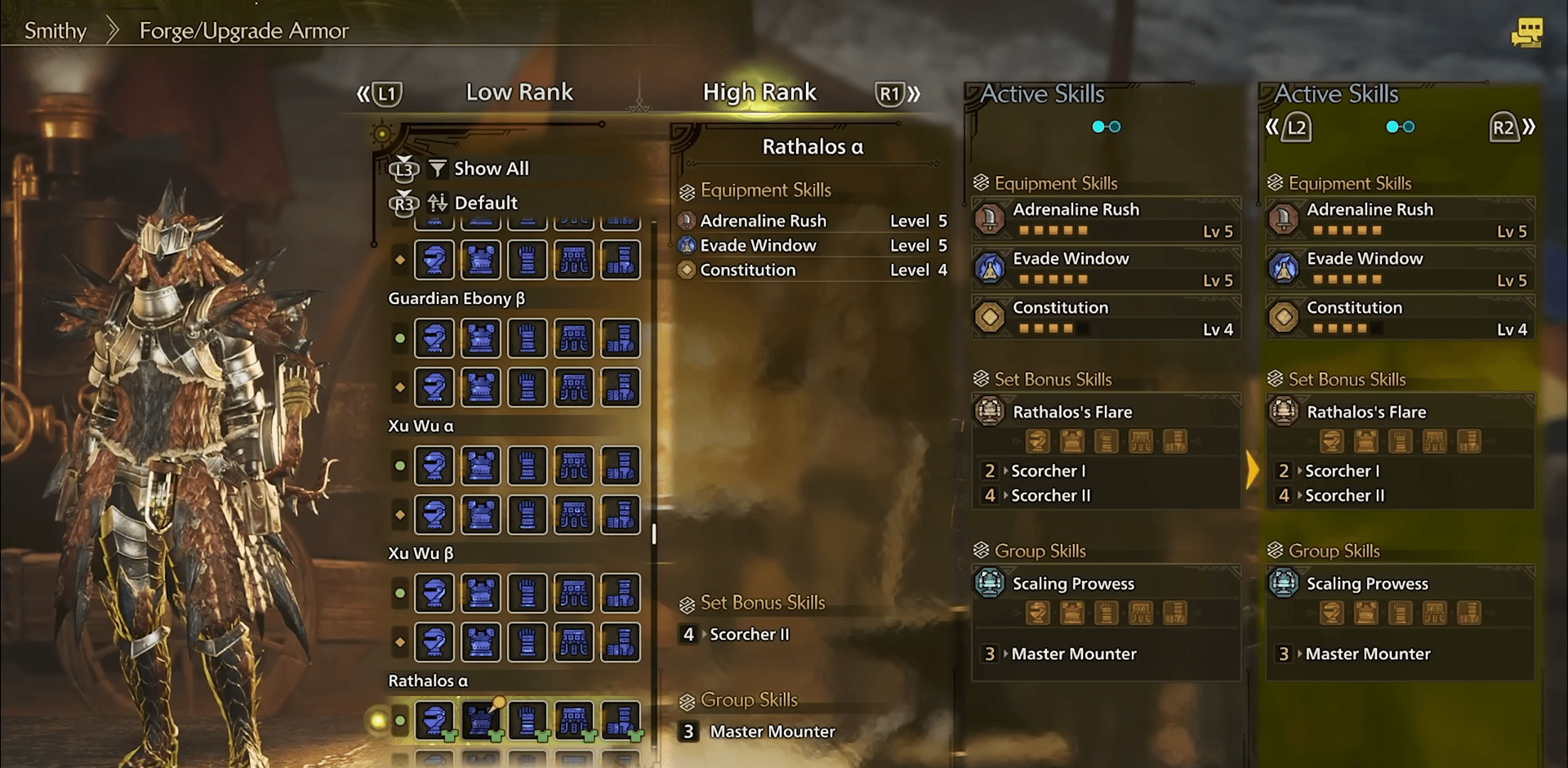 Monster Hunter Wilds: A player upgrades armour, showing progression systems based on forging.
Monster Hunter Wilds: A player upgrades armour, showing progression systems based on forging.
In addition, this approach reflects what Brändle, Wu, and Schulz (2023) call an optimal learning progress. In such environments, players are most engaged when challenges match their current skills and help them grow without becoming too frustrating. Monster Hunter’s difficulty does not increase in a straight line. Instead, it adjusts based on what the player has learned and how well they can apply that knowledge. Players go through a cycle of planning, taking action, and reflecting on their results. This encourages creative thinking and problem-solving. The game also includes a variety of weapons, each with a different playstyle. For example, the greatsword is heavy and slow but powerful, requiring good timing and control. The insect glaive allows players to move through the air and manage a companion insect, which demands fast thinking and coordination. Each weapon takes time to master, and this process is what Gee (2003) calls “intimate learning.” This means players must become so familiar with their weapon that it feels natural to use. Rather than just memorizing moves, players build muscle memory and learn to react to the situation in real time. The reward is not a higher stat, but a true feeling of skill and control.
Furthermore, this learning-based model supports Sidhu and Carter’s (2021) idea of “pivotal play”. These are moments when players change how they think and grow in meaningful ways. In Monster Hunter, this happens when players learn new behaviours, such as recognizing when a monster is about to flee or how it acts when enraged. The game does not explain these things directly. Instead, players discover them through practice and observation. The only formal progression system is the Hunter Rank (HR), which unlocks tougher monsters but does not increase the player’s power. This shows that progress in Monster Hunter is not about grinding, but about developing real skills through experience. According to Brändle et al. (2023), players are most motivated when their achievements feel earned. Monster Hunter reflects this by turning every failure into a learning opportunity and every success into a result of careful planning and smart thinking. In this way, the game does more than entertain. It helps players grow through challenge, reflection, and practice. Progress means mastery, not just strength.
In summary, Monster Hunter is a great example of how games can support learning through experience. Instead of focusing on raising stats or gaining levels like many role-playing games, it encourages players to observe, plan, and improve their skills over time. Each battle is more than just a fight; it is a learning moment. Players must understand how monsters behave, test different strategies, and reflect on both failures and successes. The game does not give easy wins. It requires careful preparation, good timing, and repeated practice.
This style of learning is supported by research in game studies and cognitive science. James Paul Gee’s “cycle of expertise” explains how players repeat successful actions until they face new challenges, which help them grow. Jacobs and his team introduce the idea of “procedural rhetoric,” meaning that players learn through the systems and rules of the game, not from direct teaching. In Monster Hunter, players learn by doing, using the environment, choosing tools, and improving their timing. Sidhu and Carter’s idea of “pivotal play” shows how certain moments in games can change how players think, leading to deeper understanding and motivation.
Finally, Monster Hunter is more than just entertainment. It is a learning environment where progress is measured by personal growth, not just numbers. Success comes from careful thought, adaptation, and skill, while failure becomes a chance to improve. Through its design, Monster Hunter teaches players to think critically, act strategically, and keep learning, both in the game and beyond.
Brändle, F., Wu, M. C., & Schulz, E. (2024). Leveling up fun: Learning progress, expectations, and success influence enjoyment in video games. ResearchGate.
Gee, J. P. (2003). What video games have to teach us about learning and literacy. New York: Palgrave Macmillan.
Jacobs, R., S., Werning, S., Jansz, J., Kneer, J. (2020). Procedural Arguments of Persuasive Games. Journal of Media Psychology.
Linhares, A., & Chada, D. M. (2013). What is the nature of the mind’s pattern-recognition process? New Ideas in Psychology, 31(2), 108–121. https://doi.org/10.1016/j.newideapsych.2012.08.001
Sidhu, P., & Carter, M. (2021). Pivotal play: Rethinking meaningful play in games through death in Dungeons & Dragons. Games and Culture, 16(8), 1044–1064. https://doi.org/10.1177/15554120211005231
Salen, K., & Zimmerman, E. (2004). Rules of play: Game design fundamentals. MIT Press.
Amazon. (n.d.). Monster Hunter: World cover art [Image]. https://m.media-amazon.com/images/I/918Fz24-9VL.jpg
Eternel Wiki. (2023). Diablos burrowing [GIF]. https://static.wikia.nocookie.net/eternel/images/2/24/Diablos_Burrowing.gif/revision/latest?cb=20230516191958
Game8. (n.d.). Tobi Kadachi electrified attack [GIF]. https://img.game8.co/3269868/de8c446354173a63925b8ee399748d34.gif/show
Reddit. (n.d.). Greatsword timed block [GIF]. https://www.reddit.com/media?url=https%3A%2F%2Fi.redd.it%2Fc55ma70h6zjd1.gif
Steam Community. (n.d.). Fatalis hunted with Dragonator [Image]. https://images.steamusercontent.com/ugc/2282825374376572048/3D8004CA1AB6DB0129ABF9E611A71251FB396A26
YouTube. (n.d.). Quest failed screen [Image]. https://i.ytimg.com/vi/XaVriTMDc4M/maxresdefault.jpg
Steam. (n.d.). Player dodging Anjanath’s fire breath with slinger [Image]. https://shared.fastly.steamstatic.com/store_item_assets/steam/apps/582010/extras/MHW_slinger_s.jpg?t=1734656748
EDFCentral. (2023, Sept. 7). Rathalos triggers landslide [Video]. YouTube. https://www.youtube.com/watch?v=n3vqnmlylXg&t=430s&ab_channel=EDFCentral
Overgear. (2025, March). Monster Hunter Wilds: Armour and decoration upgrade system [Image]. https://overgear.com/guides/wp-content/uploads/2025/03/mh-wilds-rathalos.png
Shopify. (n.d.). A player lures two monsters into a turf war [GIF]. https://cdn.shopify.com/s/files/1/0602/0156/6449/files/Turf-War-GIF_36f2847b-7a83-4ac7-8d70-8bf06dd439b4.gif